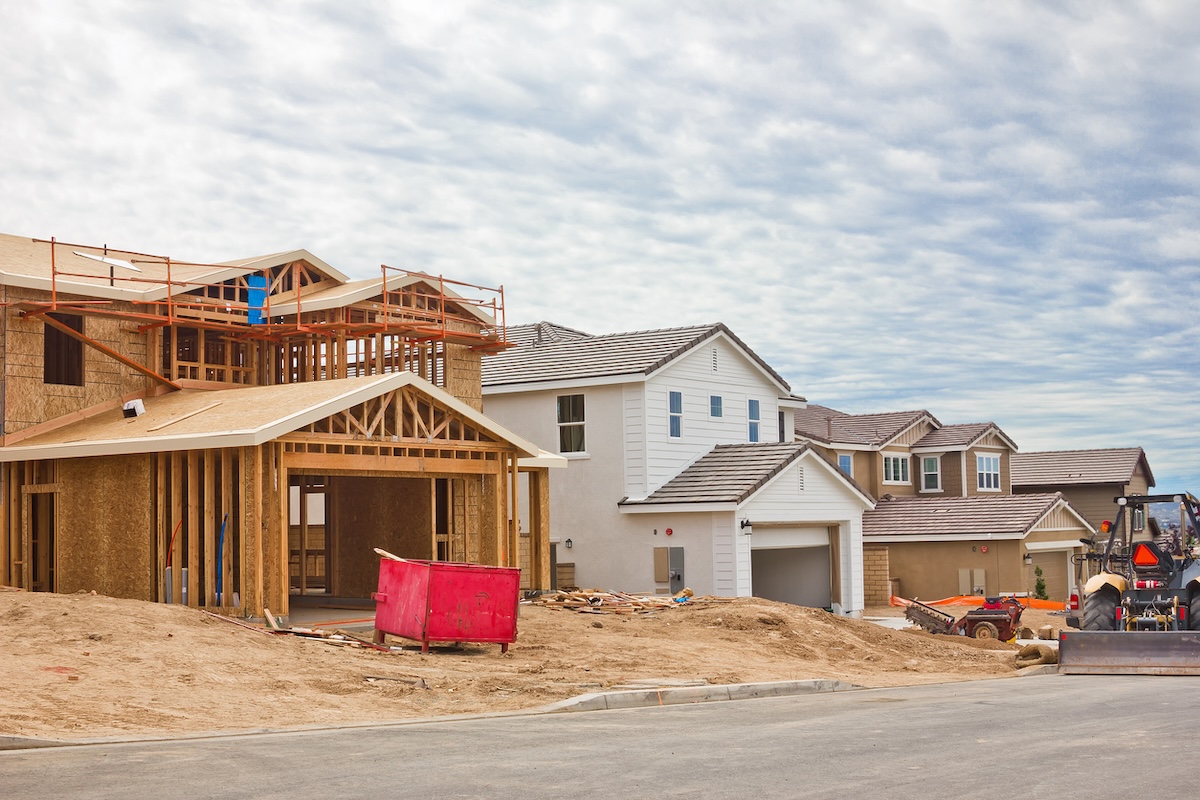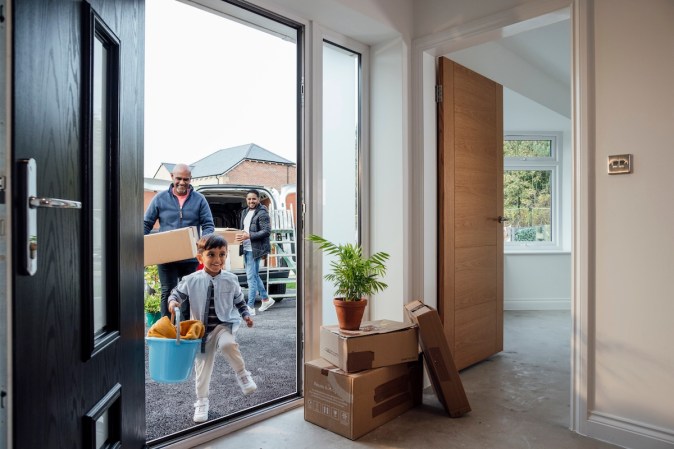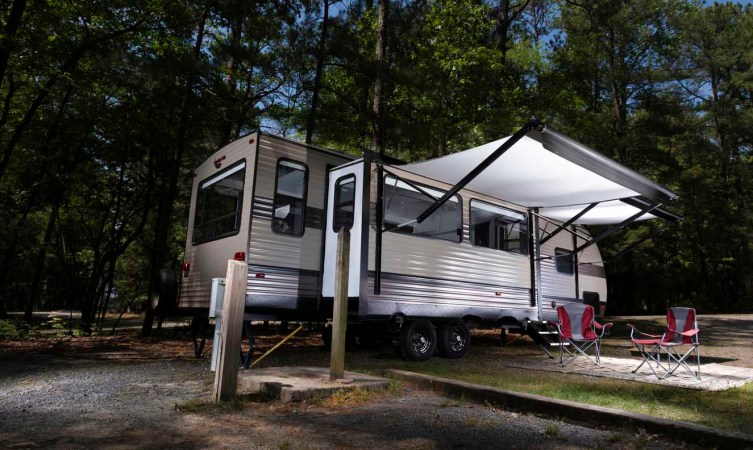We may earn revenue from the products available on this page and participate in affiliate programs. Learn More ›
Persistently high interest rates and inflated home values combined to put the brakes on the real estate housing market in 2023. The highest mortgage interest rates in more than 20 years scared away buyers, while at the same time discouraging homeowners who were sitting on record low interest rates from selling. The result was a shortage of inventory that continued to drive home values upward, further discouraging buyers from entering the marketplace. Meanwhile, builders sought to fill that gap in inventory, causing new-home construction to skyrocket.
While mortgage interest rates are likely to remain high in 2024, many economists expect the rates to trend downward just enough to lure buyers and sellers who have been anxiously waiting on the sidelines to return to the market.
Mortgage rates drove down supply and demand.
Many expected 2023 to see the market correct itself from dramatic increases in home values in 2021 and 2022, but, thanks to high interest rates, it never happened. “There was a moment when we thought the market would calibrate itself, but it has continued to be a very strong seller’s market with a significant reduction in inventory,” says Phoebe Schreiner, a real estate agent for Sotheby’s New England.
High rates hovering around 7 percent discouraged potential home buyers from making a move while those locked in at historically low interest rates were reluctant to put their homes up for sale. “Homeowners who were thinking about selling don’t want to trade in their refinanced 3-percent mortgage rate for a 7-percent rate,” says Orphe Divounguy, a senior economist with Zillow. “Because demand and supply both came down at the same time, home values have remained high. With fewer buyers and sellers in the market, fewer homes are trading hands compared to a typical year.”
With an average of 75-percent reduction in inventory across the board, this trend with low inventory is likely to continue through 2024, says Schreiner, though there is a light at the end of the tunnel. “The expectation that interest rates will come down in Q3/4 2024 may likely encourage sellers to list, which would be a welcome shift,” she says.

It’s a seller’s market.
While some homeowners might be reluctant to give up their low interest rates by selling, high home values and a shortage of inventory continue to make it a great real estate housing market for sellers, according to real estate agents.
In fact, Schreiner says there hasn’t been a better time to sell than there is right now. “There is the most seller ‘forgiveness’ for sellers we’ve seen in years given the lack of inventory,” she says. “Sellers should still properly prepare and market their homes for resale, but buyers will remain more willing to take on renovations, repairs, and updates.” Schreiner adds that sellers also can expect to get concessions from buyers on inspections, financing, appraisal gaps, and more.
If they choose to put their homes on the market, sellers can expect to get a good price and a quick sale, Divounguy says. “Despite the recent increase in new listings, home values are 4.2 percent higher today than they were a year ago, and homes are selling far faster than they were prior to the pandemic,” he says. “Attractive listings that are priced and marketed right are going under contract in 17 days nationwide,” he adds.
Interest rates will remain high.
The market continued to be unfriendly for buyers in 2023. After mortgage rates reached an all-time low of 2.65 percent in January 2021, rates climbed to near 8 percent just 2 years later, as the Federal Reserve raised rates in an effort to combat inflation. While mortgage rates have come down some with the start of 2024, they’re still well above those early 2021 rates.
Early hopes that the Federal Reserve would cut rates in 2024 fizzled at the end of the first quarter. Inflation climbed from 3.2 percent to 3.5 percent from February to March, well above the 2-percent goal the Fed hopes to achieve. This means the Federal Reserve interest rate, and with it, mortgage rates will likely remain high through 2024. In its latest forecast, Fannie Mae predicts rates to only drop slightly in 2024 to 5.9 percent.
Home sales will rise.
Home sales dropped to their lowest levels in nearly 30 years in 2023, down 19 percent from 2022, according to the National Association of Realtors (NAR). While economists don’t expect a dramatic recovery in 2024, home sales are expected to rise as impatient buyers and sellers return to the table. Fannie Mae is forecasting a 5-percent increase in home sales in 2024 over 2023.
Early signs indicate that the market is indeed loosening up. NAR reported a 9.5-percent increase in home sales from January to February 2024, though sales were still down 3.3 percent compared to February 2023.
Sellers also appear to be tired of waiting for market conditions to change to sell their homes. Zillow reported a 21-percent increase in new listings in February year over year. “It’s a sign ‘rate lock’ is loosening; homeowners appear more willing to list their home for sale and give up their low mortgage rate,” Divounguy says.
And since Fannie Mae is predicting moderate declines in interest rates as the year progresses, sales and listings should only continue to increase.

Home prices will continue to climb.
Though the growth rate for home prices is slowing, it’s still moving upward, albeit sluggishly, according to the latest version of the Case-Shiller U.S. National Home Price NSA Index, released in March. After a brief decline in mid-2023, the report states that home prices were up 6 percent year over year in January, though that’s still a far cry from the 20-percent growth rates we saw in 2021 and 2022.
Month-to-month home values tell a different story. Whereas all major cities experienced year-over-year growth, the report shows that home values are struggling to rise as buyers pull back in the face of rising mortgage interest rates. U.S. home prices actually decreased on a month-to-month basis from November 2023 to January 2024, according to the Case-Shiller index.
This slow uptick is due in part to an increase in inventory, says Divounguy. “More inventory, without an equal increase in sales, eases the competitive pressure that pushes home values higher,” he says. In fact, increases in new for-sale listings caused Zillow to dial back its growth forecast for home values to 1.9 percent as of April 2024.
Real estate market conditions vary based on location.
Just how much home values fluctuate is highly dependent on location. Real estate growth boomed in cities like San Diego, Charlotte, N.C., and Chicago in 2023 but was slower in metropolitan areas like Portland, Denver, and Dallas.
Local demographics are also having a big impact on the number of new listings. Zillow reports seeing the greatest increases in new listings in Texas and Florida, which has an older population and hence a larger percentage of homeowners who are insulated from fluctuating mortgage rates because they don’t have a mortgage.
Lawsuit changes the real estate landscape.
Complicating the outlook for the real estate market is a recent ruling in a lawsuit against NAR that changes the rules on residential sales, ending the longtime practice of charging sellers a 6-percent commission that’s paid to the buyer’s and seller’s agents for including their home on MLS sites. Economists believe the new ruling is expected to slash realtor commissions by as much as 30 percent, saving sellers a significant amount of money on the sale of their home.
Though the ruling benefits home sellers, it could complicate things for buyers, who will now have to negotiate compensation with their buyer’s agent for the services they’re providing.

New construction fills the gap.
The end of 2023 saw a spike in new home construction. According to the U.S. Census Bureau, builders broke ground on 1.56 million new homes in November 2023, well above what analysts had predicted and 14.8 percent above the 1.36 million new constructions that October.
This increase is related to the decline in inventory for existing homes. New construction is helping to fill the gap left by existing homeowners unwilling to sell homes with historically low mortgages. According to Zillow, the inventory of existing homes is down a whopping 36 percent compared to pre-pandemic levels. As a result, new construction by home builders accounts for about 30 percent of all home sales, far greater than the roughly 10 to 12 percent slice of the home sales pie it usually accounts for.
There are other advantages to buying new construction that are luring buyers. Many builders can offer incentives that private sellers can’t. “Concessions like mortgage-rate buy-downs and covering closing costs can save buyers thousands of dollars, and can really move the needle in today’s high-rate environment,” Divounguy says.
And with higher interest rates pushing mortgages higher, many buyers who are already stretching to pay for a larger mortgage don’t want the added cost of maintaining an older home.
This trend in new-home construction is expected to be a major factor in 2024, with NAR predicting a 4.7 percent increase in new single-family construction units in 2024.
Interest in attached homes is surging.
Also helping to drive this new construction boom is a surging interest in townhomes and condos. These attached homes cost less than freestanding ones, which appeals to buyers looking for more affordable alternatives to “detached” homes to offset those high interest rates. Townhomes accounted for about 17 percent of all new home construction in 2023, the highest in 15 years, according to NAR.
And Zillow reports seeing a 12-percent decline in the construction of standalone homes from 2021, while “attached” homes, including townhomes and condos, have increased by 2.9 percent.
Buyers are creatively cutting costs.
In the face of high mortgage rates, buyers are getting creative to cut the cost-of-living expenses by finding ways to share them. One of those strategies is house hacking, which is renting out part or even all of a home to make extra money. In fact, more than half of millennial and Generation Z home buyers place a high importance on being able to rent out a portion of their home for income, according to Zillow.
Going in with a friend or family member to co-purchase a home is also becoming more popular. Zillow found that some 21 percent of home buyers reported co-buying in 2023.

The Midwest offers affordable options.
Remote workers and others who have the flexibility to move to wherever they want might consider a few affordable metro areas where their money will go further. Zillow reports that four of these metro areas are located in the Midwest and include St. Louis, Detroit, Minneapolis, and Indianapolis, where some 30 percent of listed homes fall within the budget of a median household.
“Many of these metro areas offer all the amenities of the big city, with relative affordability and a high quality of life,” Divounguy says.
Updates pay off.
As has always been the case, homeowners looking to sell can make their homes more appealing by making smart upgrades. Schreiner says refinishing or installing hardwood floors is always a smart investment. So too are upgrades to kitchens and bathrooms.
“Buyers are willing to take on minimal painting or small house projects,” says Schreiner. Yet, she adds that most buyers do not want to take on big construction projects. “If homeowners are remodeling, I encourage them to update the kitchens, bathrooms, and floors, and, if possible, add in a laundry or mudroom,” Schreiner says. Even in a seller’s market, the right features can give home values a boost.

















